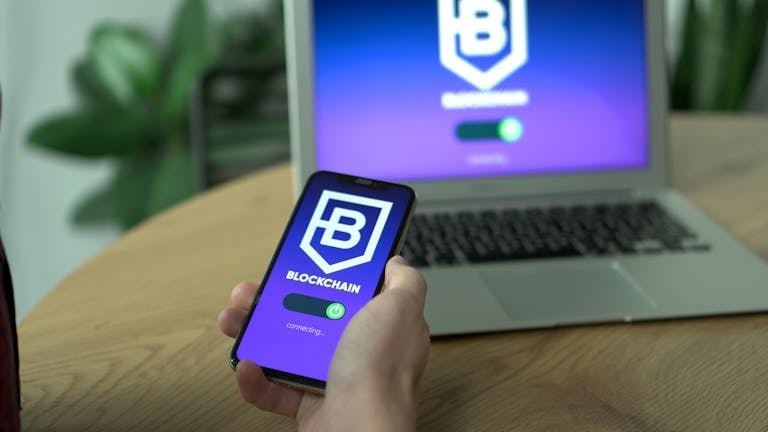7 Crypto Wallet Mistakes That Could Cost You Thousands (And How to Avoid Them)
7 Crypto Wallet Mistakes That Could Cost You Thousands
When it comes to cryptocurrency, one simple mistake can wipe out your entire investment. Unlike a bank, there’s no “customer service” to call when your coins disappear. Your crypto wallet is the key to your digital fortune, and mishandling it can lead to devastating losses.
Here are the 7 most common crypto wallet mistakes investors make — and, more importantly, how to avoid them.
1. Leaving Large Amounts on Exchange Wallets
Many beginners keep all their funds on exchanges like Coinbase or Binance because it’s convenient. The problem? Exchanges can be hacked, accounts can be frozen, or the company could even go bankrupt.
How to avoid it:
Only keep trading funds on an exchange. For long-term storage, transfer your coins to a non-custodial wallet (hardware or software) where you control the private keys.
2. Not Backing Up the Recovery Phrase
Every wallet gives you a seed phrase (12–24 random words). Lose it, and you lose your coins forever. Too many investors skip writing it down, or worse, store it on their phone where it can be hacked.
How to avoid it:
- Write your recovery phrase on paper (or use a metal backup for fire/flood resistance).
- Store it in at least two secure, offline locations.
- Never save it in cloud storage, email, or screenshots.
3. Falling for Phishing Attacks
Hackers create fake wallet apps, websites, or emails designed to steal your keys. Even experienced users fall for lookalike sites that mimic popular wallets.
How to avoid it:
- Always download wallets from official websites or trusted app stores.
- Double-check URLs before entering any details.
- Bookmark official sites (like Ledger.com or Trezor.io).
4. Ignoring Wallet Updates
Outdated wallet software can contain bugs or vulnerabilities that hackers exploit. Many users delay updates because they’re “busy” — and pay the price later.
How to avoid it:
- Enable automatic updates when possible.
- Check official channels (Twitter, Telegram, GitHub) for update notices.
- Only download updates from the official source.
5. Using Weak or Reused Passwords
A wallet password is often the first line of defense. Reusing the same password you used for Netflix is asking for trouble.
How to avoid it:
- Use a unique, strong password (at least 12 characters with symbols and numbers).
- Store it in a password manager instead of your phone notes app.
- Combine with two-factor authentication (2FA) wherever possible.
6. Losing the Hardware Wallet
Hardware wallets are one of the safest ways to store crypto — until you lose one in a move, or forget it in a drawer. Without your recovery phrase, your funds are gone forever.
How to avoid it:
- Treat your hardware wallet like a passport or jewelry: keep it in a safe.
- Record your recovery phrase securely (see Mistake #2).
- Consider having a spare device you can restore if needed.
7. Sending Funds to the Wrong Address
Unlike PayPal or Venmo, there’s no “undo” button in crypto. If you send Bitcoin to the wrong wallet address, it’s gone.
How to avoid it:
- Always copy-paste addresses — never type them manually.
- Double-check the first and last 4 characters of the address before sending.
- For large transfers, send a small test transaction first.
Mistakes vs. Fixes: Quick Comparison Table
| Mistake | Why It’s Dangerous | How to Avoid It |
|---|---|---|
| Leaving funds on exchanges | Risk of hacks, frozen accounts | Move funds to a hardware or non-custodial wallet |
| Not backing up recovery phrase | Permanent loss of funds | Write it down & store in secure locations |
| Phishing scams | Hackers steal private keys | Verify URLs, only download official apps |
| Ignoring updates | Bugs and vulnerabilities exploited | Regularly update from official sources |
| Weak or reused passwords | Easy target for hackers | Use strong, unique passwords + 2FA |
| Losing hardware wallet | No access without recovery phrase | Backup properly, keep in a safe place |
| Sending to wrong address | Funds are unrecoverable | Double-check addresses, send test first |
Crypto Wallet FAQs
Q: What’s safer: a mobile wallet or a hardware wallet?
Hardware wallets are more secure since they’re offline, but mobile wallets are fine for small, everyday amounts.
Q: Can I use the same wallet on multiple devices?
Yes, most software wallets allow syncing across devices, but make sure you only use official apps.
Q: Is MetaMask safe for storing large amounts?
MetaMask is popular for NFTs and DeFi, but it’s still a hot wallet. For larger investments, use a hardware wallet.
Q: Do all wallets support all cryptocurrencies?
No, each wallet supports a list of specific coins. Always check compatibility before sending funds.
Crypto Wallet Safety Checklist
✅ Always move long-term funds off exchanges
✅ Write down and secure your recovery phrase
✅ Download wallets only from official sources
✅ Keep your wallet software updated
✅ Use unique, strong passwords + 2FA
✅ Store hardware wallets in a safe place
✅ Double-check addresses before sending funds
Print this list, or save it as your go-to reference before making any crypto transaction.
Protect Your Crypto Before It’s Too Late
Crypto wallets are powerful tools — but they demand responsibility. By avoiding these 7 mistakes, you’ll dramatically reduce your risk of losing your digital assets.
If you’re serious about crypto, invest in a hardware wallet and make wallet security your top priority. It’s a small cost that could save you thousands.


